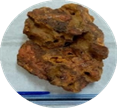MHa2
This horizon has a similar facies to the MHa1 horizon, mainly in terms of the clay matrix, which is smooth, very fine and sticky to the touch. However, this level contains fewer granular inclusions.
The granules (alterites) observed are centimetric to millimetric in size. Broken up with a hammer, the inside of the granules is greenish in colour, illustrating the degree of weathering of the parent rock. Fine quartz crystals can also be seen inside the granules, with their characteristic brilliance and whitish minerals staining the entire interior of the granule.
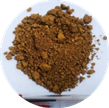
MHa3
A loose, very fine-grained, yellowish rock with a smooth, soft, sticky feel.
There are virtually no residual alterite inclusions in this rock. It may be related to a very fine argillite.
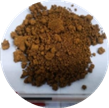
MHa4
The facies of this horizon is similar to that of the MHa3 horizon, where the similarities in the matrix are mainly related to the touch and the presence of granular alteritic inclusions. However, in terms of colour, this horizon is influenced by organic inputs from plants; these are reflected by the blackish tendency in this horizon.

MHa5
Loose surface rock sampled at the top of the profile, essentially clay, with a yellowish colour that darkens to black as a result of contact with organic matter. Very fine grained, this rock has almost no visible granular inclusions.
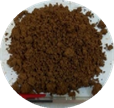
MHb
MHb1
Loose rock with a yellowish clay matrix containing many grains of varying sizes and shapes. Very sticky to the touch, the clay making up the matrix is smooth and soft. The granules show virtually the same colouring inside their bodies.
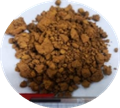
MHb2
Essentially clayey loose rock containing almost no visible grains. The grain size is very fine and has a yellowish colour with a blackish tendency due mainly to the influence of organic matter.
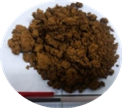
MHb3
Rock with the same facies as the MHb2 horizon. However, the dark colouration is much more marked due to the increasing influence of organic matter.
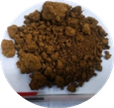
MHba0
Horizon with large, decimetric blocks of weathering in a clay matrix. These blocks are heterogeneously coloured, giving a reddish kaolinic and yellowish to blackish colour in places. Hard, more or less compact and relatively less dense, these alterites are rough to the touch. They have many pores as a result of meteoric and organic activity.
The alterites contain a number of well-individualised quartz crystals with a characteristic brilliance.
